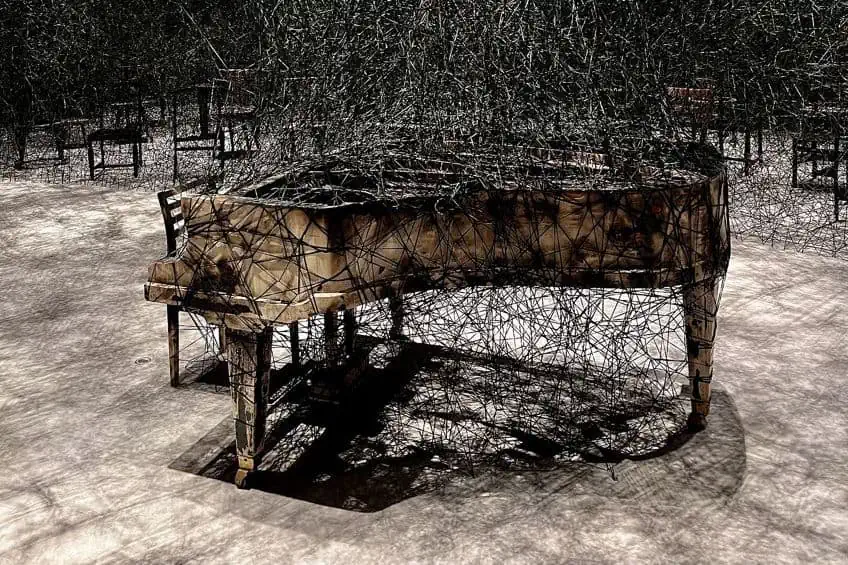Female Japanese Artists – 14 Women Who Shaped Modern Art
Join us on a captivating journey through the personalities and career paths of some of the world’s most famous female Japanese artists from the past and present. In this article, we will dive into the lives and highlights of Japan’s best femme talents, who have pioneered different art styles from traditional crafts to avant-garde works that bridge the gap between traditions of the past and modernity. Keep reading to learn more about these 14 innovative and master artists of Japan!
Contents
- 1 Japanese Women Who Shaped Modern and Contemporary Art
- 2 14 Famous Female Japanese Artists You Need to Know
- 2.1 Hanae Mori (1926 – 2022)
- 2.2 Yayoi Kusama (1929 – Present)
- 2.3 Yoko Ono (1933 – Present)
- 2.4 Fujiko Nakaya (1933 – Present)
- 2.5 Mieko Shiomi (1938 – Present)
- 2.6 Toshiko MacAdam (1940 – Present)
- 2.7 Rumiko Takahashi (1957 – Present)
- 2.8 Yoshiko Shimada (1959 – Present)
- 2.9 Mariko Mori (1967 – Present)
- 2.10 Rinko Kawauchi (1972 – Present)
- 2.11 Chiharu Shiota (1972 – Present)
- 2.12 Chiho Aoshima (1974 – Present)
- 2.13 Aya Takano (1976 – Present)
- 2.14 Asami Kiyokawa (1979 – Present)
- 3 Frequently Asked Questions
Japanese Women Who Shaped Modern and Contemporary Art
While the names of iconic Japanese artists like Hokusai or Takashi Murakami may sound incredibly familiar, you may be just as interested in the works of some of the most revolutionary female Japanese artists. The history of creatives of Japanese origin and descent, who have also been inspired by their culture, tradition, and philosophies has produced many luminary artists. From sculpture to mixed media art, Japanese women have contributed to many pivotal moments in Modern and Contemporary art, such that many of the art styles and approaches we see today have been influenced by these creative women.

From figures like Mariko Mori to Yayoi Kusama, the way we view and understand the complexities that art can bring us has been permanently reshaped through the ways that these talented artists approach art. Japanese female artists have played a vital role in steering the majority of Modern art movements through powerful perspectives. Artists such as Rumiko Takahashi and Toshiko Horiuchi MacAdam also challenge the traditional notions of storytelling and craftsmanship by using avant-garde approaches and embracing elements of global popular culture.
While these are only a few of the most famous Japanese female artists that we will discuss below, it is important to acknowledge the contributions of modern Japanese artists in redefining contemporary art and fostering new perspectives about how artists draw on their culture and artistic mediums to produce compelling artworks.
14 Famous Female Japanese Artists You Need to Know
Whether it is through mixed media approaches or traditional crafts, female Japanese artists have, for decades, pioneered innovative forms of engaging with material and conceptual elements in professional art practice. Below we have compiled a list of the 14 most famous female Japanese artists that you ought to know!

Hanae Mori (1926 – 2022)
| Artist Name | Hanae Mori |
| Date of Birth | 8 January 1926 |
| Date of Death | 11 August 2022 |
| Place of Birth | Shimane, Japan |
| Associated Movements, Themes, and Styles | Modern art, fashion, and haute couture design |
| Mediums | Fashion design and costume design |
| Famous Artworks |
|
Madame Butterfly, also known as Hanae Mori, was an icon in Japanese art history, who was also the first Japanese woman to receive admittance into the Parisian Chambre Syndicale de la Haute Couture. Her best artworks encompass her unique and avant-garde fashion designs and garments that have left an unforgettable mark on the global runway. The famous fashion designer blended her admiration for traditional Japanese styles with a modern twist to pilot Japanese fashion onto a European stage. Mori was also the first Japanese woman to establish her own haute couture house and became a cultural ambassador for Japan, which left an enduring legacy. Among her best-known works include the Red satin evening dress in makie-style, which was created in 1994 and was inspired by traditional Japanese craftwork, along with gold-printed autumn leaves adorning the makie style garment.
In 1988, she received the Medal of Honor with a purple ribbon and grew her own international business, which was worth $500 million by the 1990s.
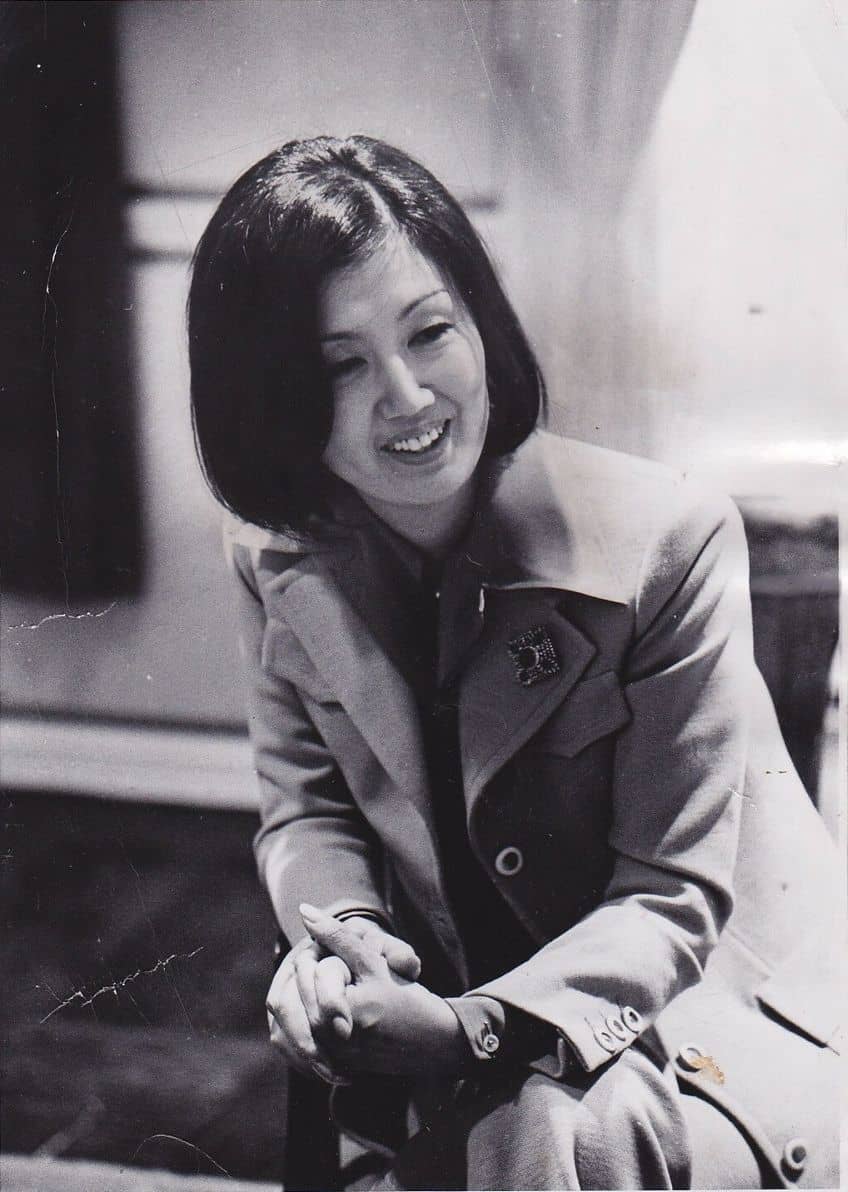
Yayoi Kusama (1929 – Present)
| Artist Name | Yayoi Kusama |
| Date of Birth | 22 March 1929 |
| Place of Birth | Matsumoto, Nagano, Japan |
| Associated Movements, Themes, and Styles | Modern art, Contemporary art, Feminism, Abstract art, Environmental art, fiction, Minimalism, and Pop art |
| Mediums | Installation, sculpture, performance, painting, drawing, video art, writing, and film |
| Famous Artworks |
|
Yayoi Kusama is among the world’s most famous modern Japanese artists of all time, whose contributions to some of the most popular modern art movements have proved incredibly profound. Kusama is best known for her polka dot artworks, which earned her the nickname “the polka dot princess” in the 20th century. She is also praised for her gentle and childlike approach to sculpture and use of natural forms while confronting darker subjects that address her mental health and battle with hallucinations since childhood. The multi-media artist also established her own museum in Shinjuku, Tokyo, and has contributed to multiple art movements, from Surrealism and Feminism to Minimalism and Pop art. Born in 1929, the modern Japanese artist was raised in Matsumoto and attended the Kyoto City University of Arts, specializing in nihonga painting. Kusama was moved by the visual languages of emerging American modernists and relocated to New York City in 1958, participating in multiple avant-garde events and 1960s cultural movements. To date, Kusama is among the world’s best-selling female artists and also one of the most successful living artists, whose works have also influenced the likes of Andy Warhol.
Kusama’s practice in the contemporary era involves installations and sculptures, while she remains active across video art, fashion, fiction, poetry, and performance art.
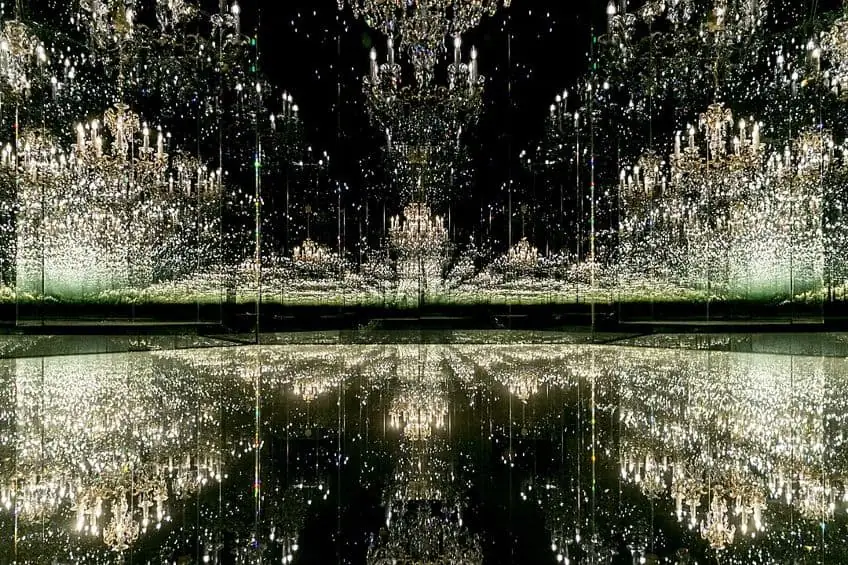
Yoko Ono (1933 – Present)
| Artist Name | Yoko Ono |
| Date of Birth | 18 February 1933 |
| Place of Birth | Tokyo, Japan |
| Associated Movements, Themes, and Styles | Modern art, Contemporary art, peace activism, conceptual art, Dadaism, Fluxus, and interactive art |
| Mediums | Performance, filmmaking, and installation |
| Famous Artworks |
|
Yoko Ono is among the world’s most celebrated female Japanese artists, who is praised for her contributions to Modern and Contemporary art via performance, installation, and interactive media. Ono’s art practice is rooted in her deep exploration of concepts inspired by her personal history and relationship with her late partner John Lennon in the mid-20th century and her advocation for peace, feminism, and audience participation in performance art. A few of her most famous works include her 1964 work Cut Piece and Museum of Modern [F] Art in 1971, which made her a prominent figure in performance and institutional critique. In the 1960s, Ono’s work also addressed political themes driven by the violence and impact of war witnessed in the Vietnam War. Numerous other examples of Ono’s installations and interactive artworks also exemplify her position as one of the leading performance and conceptual artists in the current period.
From works like Imagine Peace Tower (2007) to Wish Tree (2012), Ono’s contribution to the art scene has been nothing short of impactful to the way that artists can inspire solidarity and encouragement through art.
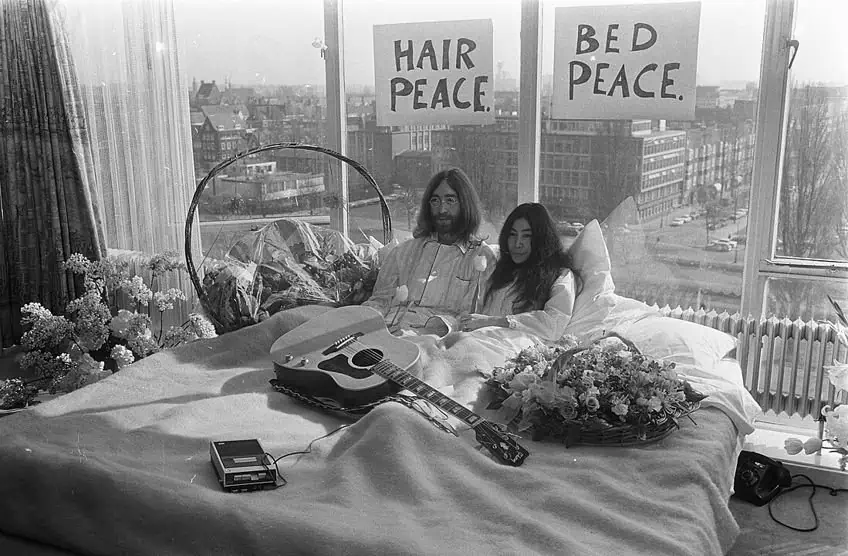
Fujiko Nakaya (1933 – Present)
| Artist Name | Fujiko Nakaya |
| Date of Birth | 15 May 1933 |
| Place of Birth | Sapporo, Hokkaido, Japan |
| Associated Movements, Themes, and Styles | Contemporary art, Experiments in Art and Technology, fog sculptures, video sculptures, translation, and the documentation of meteorological conditions |
| Mediums | Painting, performance, video art, and sculpture |
| Famous Artworks |
|
Famous fog sculpture artist Fujiko Nakaya is among the world’s most renowned female Japanese artists whose innovative approach to sculpture and video art has proven incomparable. Nakaya’s best-known works are her fog sculptures, which she developed in the 1960s when she joined the American group known as the Experiments in Art and Technology collective. Nakaya contributed significantly to creating the world’s first water-based atmospheric fog sculpture in collaboration with an engineer called Thomas Mee. After various tests and experiments, Nakaya and Mee’s signature project was recognized by the Pepsi Pavilion as a success and patented by the two after the Expo ’70 in Osaka.
Nakaya’s genius was soon recognized across the world and she went on to install many more fog sculptures at museums such as the Guggenheim Museum Bilbao and the Australian National Gallery.
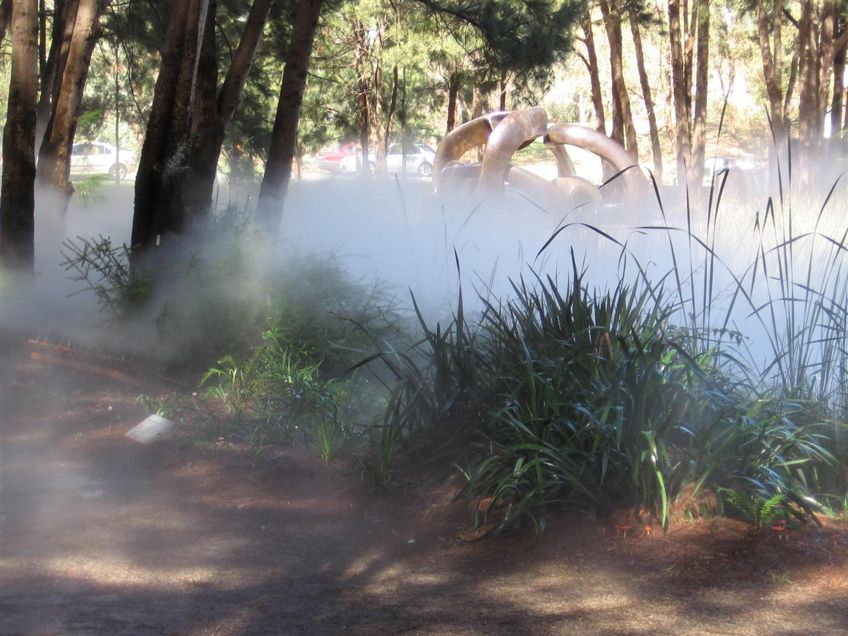
Mieko Shiomi (1938 – Present)
| Artist Name | Mieko Shiomi |
| Date of Birth | 1 January 1938 |
| Place of Birth | Okayama, Japan |
| Associated Movements, Themes, and Styles | Modern art, Fluxus, Contemporary art, postwar music, Group Ongaku, auditory experiences, water music, action poetry, and boundary music |
| Mediums | Music, writing, and poetry |
| Famous Artworks |
|
Mieko Shiomi is one of the greatest female Japanese artists of the Fluxus movement, who continues to produce artworks today. A talented music composer, visual artist, and poet, Shiomi’s contributions to the 20th-century art movement Fluxus were widely traced since her work was featured in many publications and non-traditional performance spaces. She is also the co-founder of a post-war music group known as Group Ongaku, which was focused on producing experimental sound experiences. Shiomi’s engagement with sound was rooted in her passion for nature and testing the limits of sound. Throughout the 1960s and 1970s, Mieko Shiomi produced and performed many sound pieces, including her spatial poems, which were published in Fluxus editions and circulated across New York. Her spatial poems were perhaps the most intriguing artworks on the 1970s art scene since they illustrated the internal workings of the Fluxus community that reflected the circulation of “performance and document”.
Shiomi’s poems emerged from her situation at home, as a busy mother of two children, who used the media at her disposal to continue to participate in Fluxus and alter the way performance could be carried out from across the world. Later on, Shiomi also began experimenting with electronic media while adopting text-based instructions throughout her performances in the 1990s.
Toshiko MacAdam (1940 – Present)
| Artist Name | Toshiko Horiuchi MacAdam |
| Date of Birth | 1940 |
| Place of Birth | Tokyo, Japan |
| Associated Movements, Themes, and Styles | Contemporary art, textile art, crochet art, knot-making, architectural playgrounds, immersive art, and fiber art |
| Mediums | Sculpture, knitting, embroidery, and crochet |
| Famous Artworks |
|
Famous contemporary Japanese artist Toshiko MacAdam is one of the most talented female artists from Japan. Born in 1940 during the war, Toshiko and her family moved to Manchuria, where they established a civilian hospital, however, soon the family was displaced and experienced the many hardships of living as refugees. Toshiko was deeply affected by death from an early age, which made her acutely aware of the impermanence of life. Motivated by this, Toshiko sought to fulfill her passions instead of succumbing to traditional expectations placed on Japanese women. She attended an art school in Tokyo and later graduated from a school in Michigan. Her artistic success was born out of her love for textile art and the creation of many large-scale hand-crocheted sculptures that are known as fiber artworks, and which were motivated by her endearing feelings towards children. Toshiko was also inspired to create safer and happier environments for children to play in since her view of playgrounds in Tokyo was grim as kids would play in the dust and usually under highways.
Toshiko has since created many beautiful installations in many art museums, parks, and schools to reshape the way children engage with art and play while improving their environment and mental health.
Rumiko Takahashi (1957 – Present)
| Artist Name | Rumiko Takahashi |
| Date of Birth | 10 October 1957 |
| Place of Birth | Niigata, Japan |
| Associated Movements, Themes, and Styles | Manga art, commercial art, comedy, science fiction, shōnen martial arts manga, short-story manga, and romance |
| Mediums | Writing and illustration |
| Famous Artworks |
|
Born in 1957, Rumiko Takahashi is among the best contemporary artists of the 21st century whose contributions to manga art have earned her the Shogakukan Manga Award twice, as well as the Medal with Purple Ribbon, awarded by the Japanese government. Takahashi’s practice spans several decades, beginning with her big break in 1978 with her debut work Kattena Yatsura, which won her the Best New Artist award, followed by the popular Urusei Yatsura series. A powerful storyteller, Takahashi’s approach to manga addressed important themes, considered radical in the early contemporary period. From feminism and gender roles to complex characters that are celebrated for their candid and relatable personalities, Takahashi’s talents have received global acclaim. The role of manga in shaping cultural phenomena is undoubtedly captured in works such as Urusei Yatsura, which has garnered widespread attention and recognition, resulting in over 200 million copies of Takahashi’s work circulating around the globe.
In 2019, the artist also bagged the prestigious Grand Prix de la ville d’Angoulême, which made her the second female Japanese artist to earn this honor.
Yoshiko Shimada (1959 – Present)
| Artist Name | Yoshiko Shimada |
| Date of Birth | 1 January 1959 |
| Place of Birth | Tachikawa, Tokyo, Japan |
| Associated Movements, Themes, and Styles | Contemporary art, anti-war, Feminism, socio-political issues, Japanese art history and culture, and activism |
| Mediums | Performance and printmaking |
| Famous Artworks |
|
Yoshiko Shimada is a luminary figure in Japanese performance art and feminism, who uses her art to explore the power structures and gender dynamics of the postwar period. Shimada’s practice emerged in the late 1980s and has since expanded across the globe to educate her fans on Japanese art history, politics, and feminist discourse. Using her art, Shimada explores the wartime climate of the Second World War and its impact on shaping women’s roles as both victims and perpetrators. The famous Japanese artist was also confronted with censorship issues on multiple occasions for her stance and bold works, through which she offers a candid perspective of her home country and the issues prevalent in the need for international acceptance. Shimada is also an active curator and continues to challenge societal norms, which was at its peak in her 2000 work How to Use Women’s Body.
By exploring her works, one can relish the confrontational methods of the artist and her journey as a critical feminist and cultural worker who challenges the structures of imperialism.
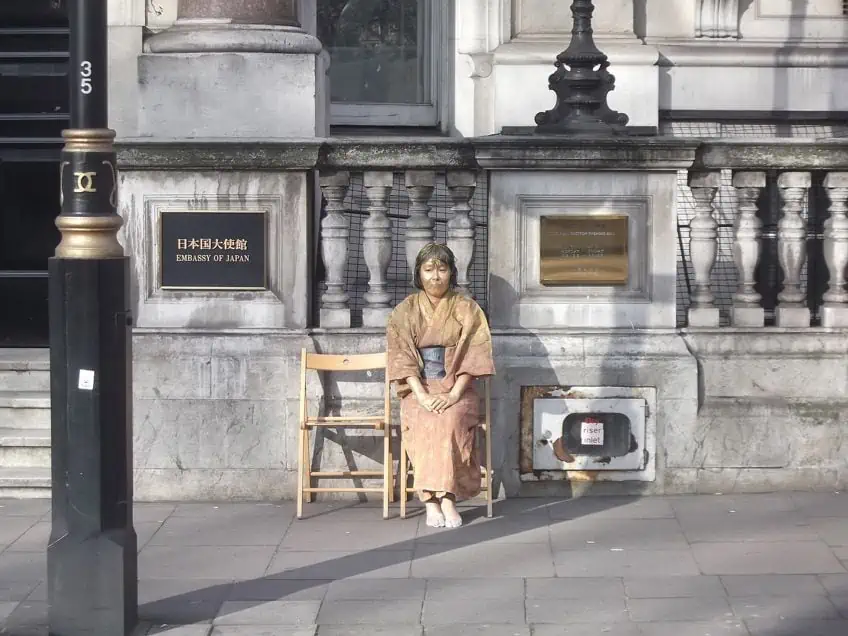
Mariko Mori (1967 – Present)
| Artist Name | Mariko Mori |
| Date of Birth | 21 February 1967 |
| Place of Birth | Tokyo, Japan |
| Associated Movements, Themes, and Styles | Contemporary art, Pop art, hybrid self, spirituality, Environmental art, transcendence, and traditional Japanese motifs |
| Mediums | Photography, performance, video art, sculpture, and digital art |
| Famous Artworks |
|
Born in 1967 in Tokyo, Mariko Mori is one of the most renowned modern Japanese artists, whose multi-medium approach to her practice has resulted in many intriguing artworks surrounding the artist’s beliefs in concepts such as interconnectedness and human relationships with technology. Mori previously worked as a model and studied fashion design in college. She later attended the Chelsea College of Art and Design in London and an Independent Study program under the Whitney Museum of American Arts in the 1990s.
As one of the leading female Japanese artists from the last 50 years, Mori’s practice encompasses universal questions that make her work stand out for its confrontation with larger-than-life questions concerning reality, the cosmos, and cycles of life and death.
Her earlier works reflected her interests in cyberculture and manga, with the artist herself engaging in performative works that evoked a pop-futuristic reality and alternative realities of contemporary Tokyo. Mori’s practice also evolved to encompass her passion for exploring ancient cultures through the prehistoric Japanese Jomon culture and the Celtic culture of Europe. Working hand in hand with technology and sculpture, Mori’s practice also celebrates the expansive possibilities of these mediums through Abstract Minimalism. In many ways, her works also conflate the concept of time and the disciplines of spiritual and scientific study. Among Mori’s best early works include Play With Me (1994) and Kumano (1997 – 1998).
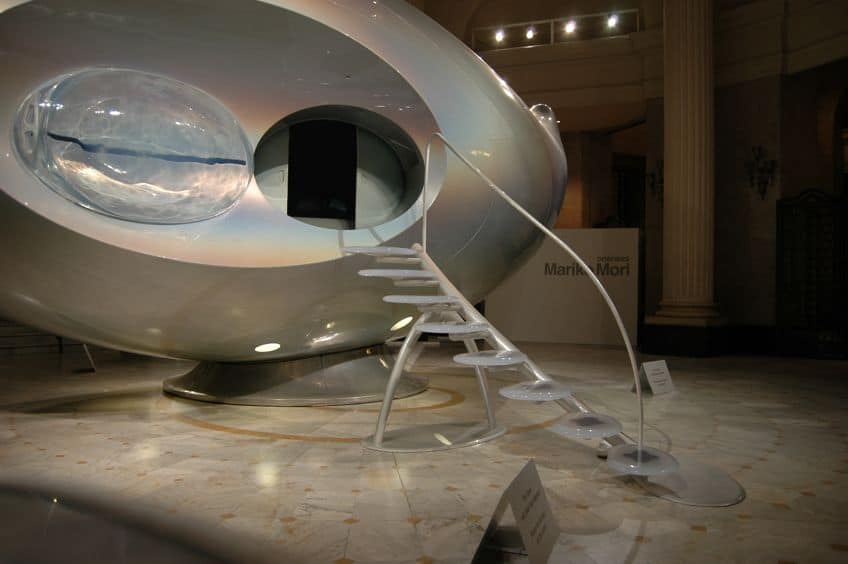
Rinko Kawauchi (1972 – Present)
| Artist Name | Rinko Kawauchi |
| Date of Birth | 6 April 1972 |
| Place of Birth | Shiga, Japan |
| Associated Movements, Themes, and Styles | Contemporary art, lyrical imagery, ordinary moments, and natural elements |
| Mediums | Photography |
| Famous Artworks |
|
Renowned contemporary photographer Rinko Kawauchi is regarded as one of the most famous female Japanese artists who is recognized for her photographic prints that explore both natural and ordinary aspects of daily life. Kawauchi’s images also evoke a hallucinatory effect through visuals that are carefully framed at the moment using common objects, natural elements, and domestic scenes. Her ability to draw attention to the ethereal and light qualities embedded in her photographs also makes her work almost lyrical, such that it is compared to a prologue to stimulate curiosity in the viewer. Kawauchi studied at the Seian College of Art and Design and released her first photo publication in 2001.
Throughout the 2010s, Kawauchi went on to release many more photo books, which have been acquired by institutions like the Tokyo Metropolitan Museum of Photography and the San Francisco Museum of Modern Art.
Chiharu Shiota (1972 – Present)
| Artist Name | Chiharu Shiota |
| Date of Birth | 20 May 1972 |
| Place of Birth | Osaka, Japan |
| Associated Movements, Themes, and Styles | Contemporary art, the body, alienation, memory, territory, space, psychogeography, relationships, life, personal objects, and death |
| Mediums | Installation, drawing, painting, sculpture, video art, and performance |
| Famous Artworks |
|
Based in Berlin, Chiharu Shiota is a renowned Japanese artist who is best known for her site-specific textile installations and labyrinth compositions. Shiota’s artworks address themes such as memory, loss, identity, and anxiety, which reflect on the human condition through multiple mediums. Shiota’s large-scale installations are constructed using threads infused with common objects, which transform spaces into complex artworks while introducing bold colors. One of her most notable works was her 2015 installation The Key in the Hand, which was shown at the Venice Biennale and contained over 50,000 keys woven into red thread hovering above two wooden boats.
Shiota’s practice also covers video art, performance, and photography, which she exhibits at institutions across the world, including the Taipei Fine Arts Museum and the SCAD Museum of Art.
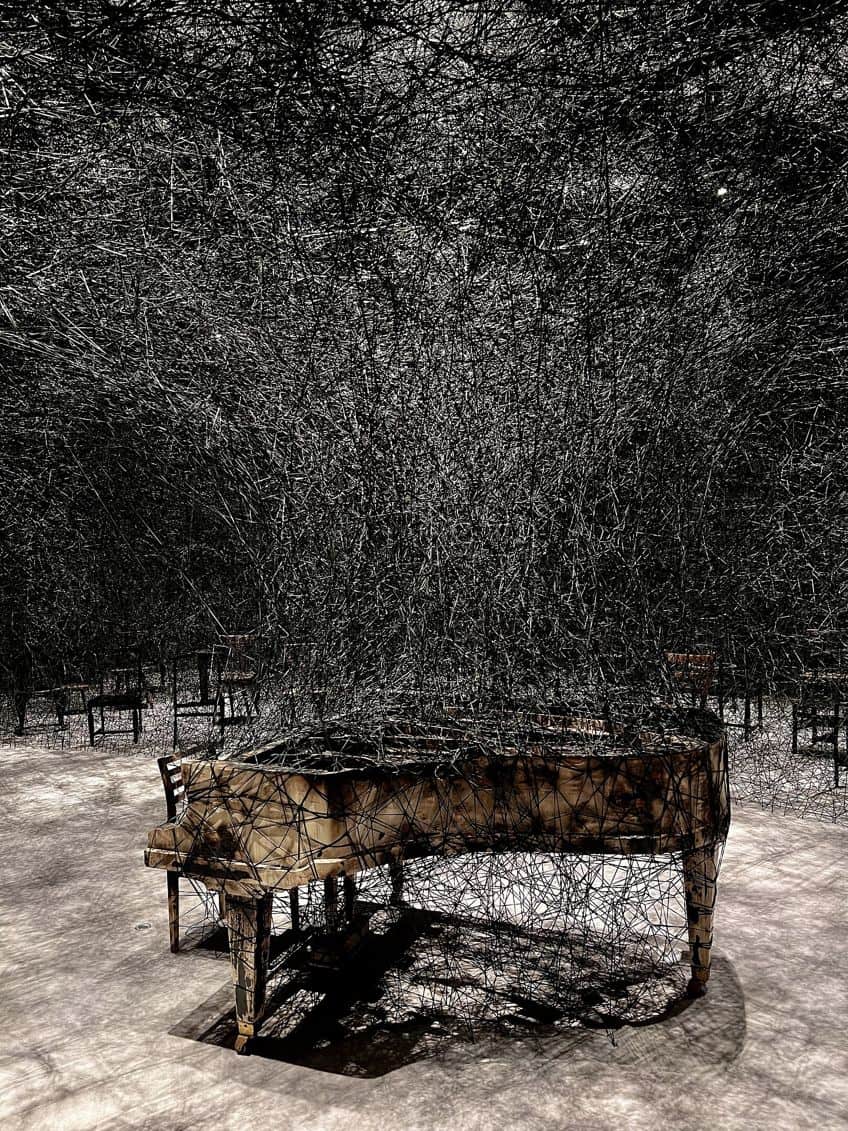
Chiho Aoshima (1974 – Present)
| Artist Name | Chiho Aoshima |
| Date of Birth | 1 January 1974 |
| Place of Birth | Tokyo, Japan |
| Associated Movements, Themes, and Styles | Contemporary art, Pop art, the Kaikai Kiki Collective, Superflat art, landscapes, Surrealism, nature, and synthetic reality |
| Mediums | Digital art, sculpture, and printmaking |
| Famous Artworks |
|
Chiho Aoshima is a world-famous Japanese artist who is recognized for her involvement in the Kaikai Kiki collective headed by Takashi Murakami. Drawing from the visual languages of artists like Hokusai Katsushika, Aoshima’s colorful and surrealist landscapes are filled with elements of Japanese popular culture, including animals and zombies that are printed as large-scale artworks. The artist also works digitally in Adobe Illustrator to create her dream-like and whimsical compositions and is driven by her passion to create images that are happier and also express the disturbing elements of the world through a softer lens. Before her artistic journey, Aoshima was engaged in economics at the Hosei University in Tokyo and moved on to pursue art in the Superflat style through drawing.
In her works, she merges the elements of nature, popular culture, and synthetic realities to create dynamic works that have been acquired by many institutions, from the Seattle Art Museum to the Carnegie Museum of Art.

Aya Takano (1976 – Present)
| Artist Name | Aya Takano |
| Date of Birth | 22 December 1976 |
| Place of Birth | Saitama, Japan |
| Associated Movements, Themes, and Styles | Contemporary art, Superflat art, manga art, Surrealism, mythology, women, animals, and science fiction |
| Mediums | Writing, painting, printmaking, and illustration |
| Famous Artworks |
|
Superflat artist Aya Takano is one of the world’s most famous female Japanese artists, whose contributions to contemporary Japanese art and manga have made her an inspiration to many young and emerging artists. Aya Takano was born in 1976 in Saitama, Japan, where she discovered her passion for infusing postmodern traditions with critical visual languages such as Superflat to appropriate elements of popular culture and draw attention to empowering forms of representing women and exploring her persona. Takano’s practice delves into the contemporary culture of Japan through her other-worldly and surrealist images that have been acquired by museums such as the Rubell Family Collection in Miami and the Museum of Contemporary Art in Los Angeles in the United States. Her introduction to Superflat also coincided with her collaborations with Takashi Murakami, when she worked as his assistant after completing her studies at Tama Art University in Tokyo.
As a sci-fi writer and illustrator, Takano is inspired by modernist movements such as Impressionism and Symbolism, as well as modern developments in Japanese history such as the Edo-era erotic stamp illustrations.

Asami Kiyokawa (1979 – Present)
| Artist Name | Asami Kiyokawa |
| Date of Birth | 15 September 1979 |
| Place of Birth | Minamiawaji, Hyogo, Japan |
| Associated Movements, Themes, and Styles | Contemporary art, beauty, portraiture, and the female form |
| Mediums | Embroidery and photography |
| Famous Artworks |
|
Asami Kiyokawa is one of the most imaginative contemporary Japanese artists, who merges the fields of photography and embroidery to create unique artworks that transport the viewer into an almost surreal landscape. Through portraiture and staged images, Kiyokawa threads through her photographs to insert various striking designs and motifs, from animals to plants that become her subjective contemplation on the images and their “inner nature”. Her vibrant designs have launched her into various collaborative projects with many famous Japanese celebrities like Shuntaro Tanikawa, AKB48, and Atsuto Uchida. Her works also celebrate the female form and have been captured in works such as her lifelong series, Bijo Saishu, where she collaborated with celebrities like Masami Nagasawa and Aya Ueto. Kiyokawa is also recognized as the youngest Japanese artist to have held an exhibition at the Mito Art Tower. She also draws inspiration from her experience as a female artist and personal journey with “psychological hang-ups”, which she infuses in her designs to make such issues appear more naturalized and less judged.
These 14 famous female Japanese artists have all put their best works forward and championed many innovative approaches to modern and contemporary art. We hope that by discovering the works of artists from diverse backgrounds, you can appreciate the innovation of the Japanese women who have dedicated their lives to reshaping contemporary art practices.
Frequently Asked Questions
Who Is the Most Famous Female Japanese Artist?
Yayoi Kusama is widely considered to be the most famous female Japanese artist to date. Kusama was born in Matsumoto in Japan in 1929 and remains one of the world’s leading contemporary artists. Her art practice encompasses multiple mediums across painting, sculpture, installation, film, fashion, poetry, and video art.
Who Were the Most Famous Female Japanese Artists of Ancient Japan?
Apart from the many male artists in ancient Japanese art history, the most famous female Japanese artists include Okuhara Seiko, Ema Saiko, and Tokuyama (Ike) Gyokuran, who were among the most prominent artistic contributors across Edo and Meiji Japan.
Who Are the Three Most Famous Contemporary Female Japanese Artists?
Yayoi Kusama, Chiharu Shiota, and Mariko Mori are among the top three most famous contemporary female Japanese artists. While the list is extensive, considering that there are many emerging female artists from Japan whose recognition continues to climb, these three artists are considered to be among the most popular and widely recognized.
Jordan Anthony is a Cape Town-based film photographer, curator, and arts writer. She holds a Bachelor of Art in Fine Arts from the University of the Witwatersrand, Johannesburg, where she explored themes like healing, identity, dreams, and intuitive creation in her Contemporary art practice. Jordan has collaborated with various local art institutions, including the KZNSA Gallery in Durban, the Turbine Art Fair, and the Wits Art Museum. Her photography focuses on abstract color manipulations, portraiture, candid shots, and urban landscapes. She’s intrigued by philosophy, memory, and esotericism, drawing inspiration from Surrealism, Fluxus, and ancient civilizations, as well as childhood influences and found objects. Jordan is working for artfilemagazine since 2022 and writes blog posts about art history and photography.
Learn more about Jordan Anthony and about us.
Cite this Article
Jordan, Anthony, “Female Japanese Artists – 14 Women Who Shaped Modern Art.” artfilemagazine – Your Online Art Source. February 5, 2024. URL: https://artfilemagazine.com/female-japanese-artists/
Anthony, J. (2024, 5 February). Female Japanese Artists – 14 Women Who Shaped Modern Art. artfilemagazine – Your Online Art Source. https://artfilemagazine.com/female-japanese-artists/
Anthony, Jordan. “Female Japanese Artists – 14 Women Who Shaped Modern Art.” artfilemagazine – Your Online Art Source, February 5, 2024. https://artfilemagazine.com/female-japanese-artists/.


